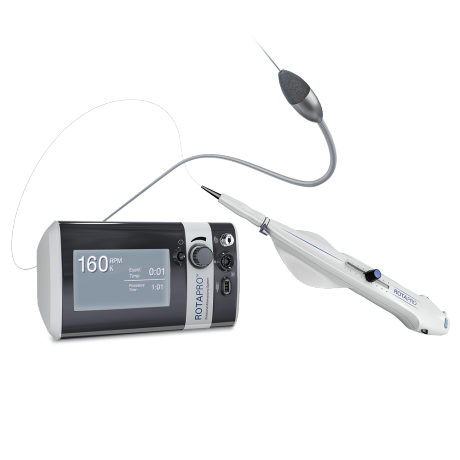RotaPro
Manufacturer: Boston Scientific
Category: Arterio-venous system devices
EMDN: C010401020402 - Coronary artery atherectomy systems, rotational
Who sell it?
- Boston Scientific

No characteristic found
The RotaPro™ Rotational Atherectomy System from Boston Scientific is a device designed to address heavily calcified coronary lesions. Its primary function is to prepare these lesions for subsequent interventions, such as stent placement, by ablating the calcium buildup. Here's a summary of its key features and USPs: Key Features and USPs: Rotational Atherectomy: - The RotaPro system utilizes a high-speed rotating burr with diamond chips to pulverize calcified plaque into microparticles. This rotational mechanism is crucial for tackling hard, calcified blockages. - This method is very effective at treating heavily calcified lesions that other methods may have difficulty with. Precision and Control: - The system is designed to provide precise control during the procedure, allowing physicians to target the calcified areas effectively. - The system has been designed with improved feedback to the physician. Enhanced System Design: - Boston Scientific has focused on improving the RotaPro system's design for ease of use. This includes features like streamlined connections and an enhanced console with a vibrant digital display. - The console has been designed to give enhanced feedback to the user. ROTAWire™ Guidewires: - The system is used in conjunction with specialized ROTAWire guidewires, which are designed to provide support and stability during the procedure. Clinical Application: - RotaPro is a tool used to prepare the vessel, so that stents can be deployed. This is very important when dealing with heavily calcified lesions, where stent deployment would be difficult without proper vessel preparation. Focus on Calcified Coronary Lesions: - This system is designed for Coronary lesions. So is focused on the heart. In essence, the RotaPro system's strength lies in its ability to effectively ablate heavily calcified coronary lesions, facilitating subsequent interventions and improving patient outcomes.